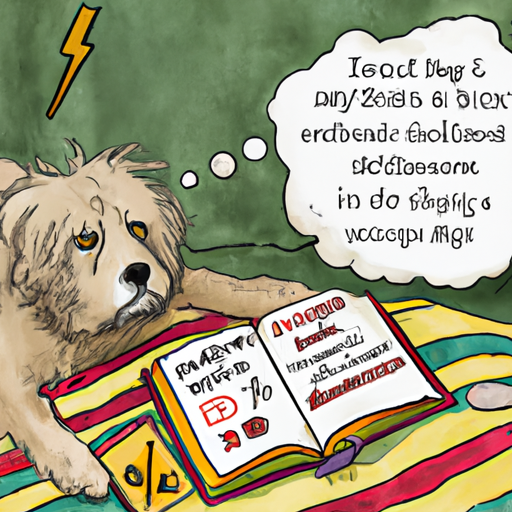Understanding Cluster Seizures
Cluster seizures refer to instances where your beloved canine companion experiences multiple seizures within a relatively short period. This could be within a single day or in some cases, within a few hours. This condition can be quite distressing for both you, as a caregiver, and your furry friend.
These seizures arise from abnormal electrical activity within the brain, which in turn could stem from a variety of underlying causes such as epilepsy, brain tumors, or even exposure to toxins. As a responsible caregiver, it’s important to understand that while cluster seizures can be frightening and life-threatening, they are also manageable with the right treatment and care.
Recognizing the Signs
Before you can effectively manage cluster seizures, you need to recognize the signs. Seizures can manifest in various ways, with the most common symptoms including:
- Sudden uncontrollable shaking or tremors
- Loss of consciousness
- Unusual behavior such as pacing, restlessness, or confusion
- Temporary loss of motor control
Management Strategies
Effective management of cluster seizures involves a combination of medical intervention and lifestyle changes. Here are some strategies that can help:
-
Immediate Medical Intervention: If your dog experiences a cluster seizure, it’s crucial to seek immediate veterinary attention. Your vet may administer medications such as diazepam or phenobarbital to control the seizures.
-
Long-term Medication: Your vet may also recommend long-term medication to help manage your dog’s seizures. This could include drugs such as potassium bromide or levetiracetam.
-
Lifestyle Changes: In addition to medication, certain lifestyle changes can also help manage cluster seizures. This could include providing a calm and stress-free environment for your dog, maintaining a consistent feeding and exercise routine, and avoiding triggers that might provoke a seizure.
| Strategies | Description |
|---|---|
| Immediate Medical Intervention | Fast response to control seizures |
| Long-term Medication | Regular medication to manage seizures |
| Lifestyle Changes | Creating a conducive living environment |
Prevention and Proactive Steps
While it might not be possible to prevent all seizures, there are proactive steps you can take to minimize the risk and ensure your dog’s overall well-being:
- Regular vet check-ups: Regular veterinary check-ups can help detect any underlying medical conditions that might trigger seizures.
- Dietary management: A balanced diet can help maintain your dog’s overall health and potentially reduce the risk of seizures.
- Stress management: Try to minimize any stress or anxiety for your dog as it can potentially trigger seizures.
Frequently Asked Questions (FAQs)
-
Are cluster seizures life-threatening?
Yes, they can be. Immediate veterinary intervention is crucial. -
Can cluster seizures be cured?
While there’s no definitive cure, they can be managed with medication and lifestyle adjustments. -
Can diet affect my dog’s seizures?
Yes, a balanced diet can help maintain overall health and potentially reduce seizure risks. -
How often should I take my dog for check-ups?
Regular check-ups, at least twice a year, are recommended for dogs with seizures.
Remember, as a caregiver, your love, patience, and understanding can make a world of difference for your furry friend. Your dog’s health and happiness depend on your proactive steps, and together, you can navigate through the challenges of cluster seizures.



